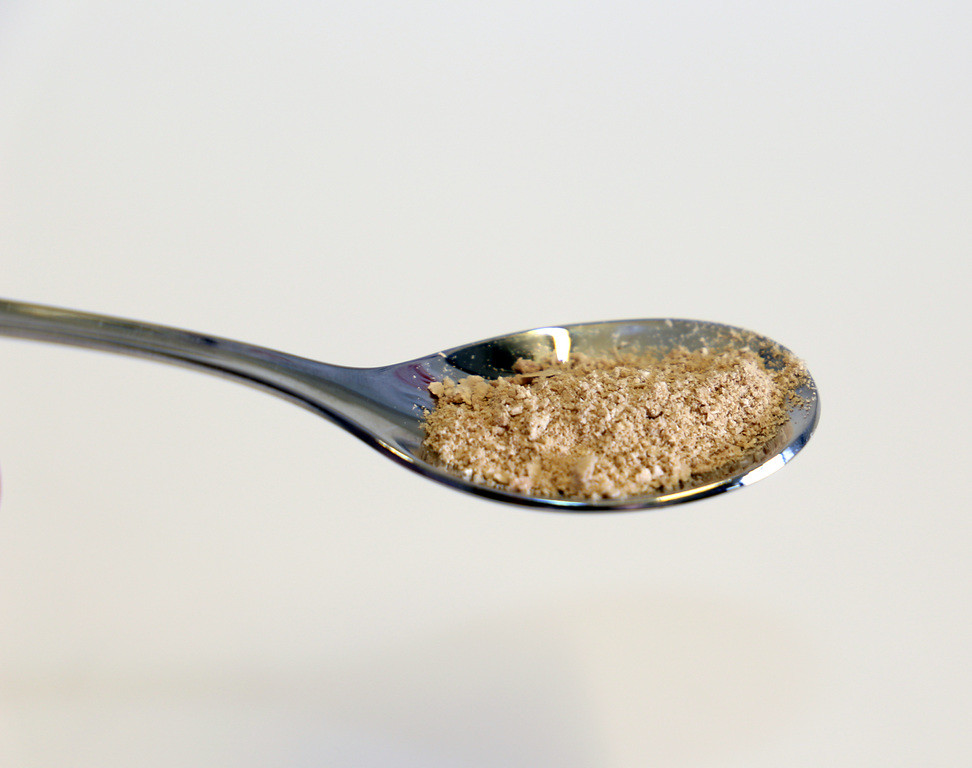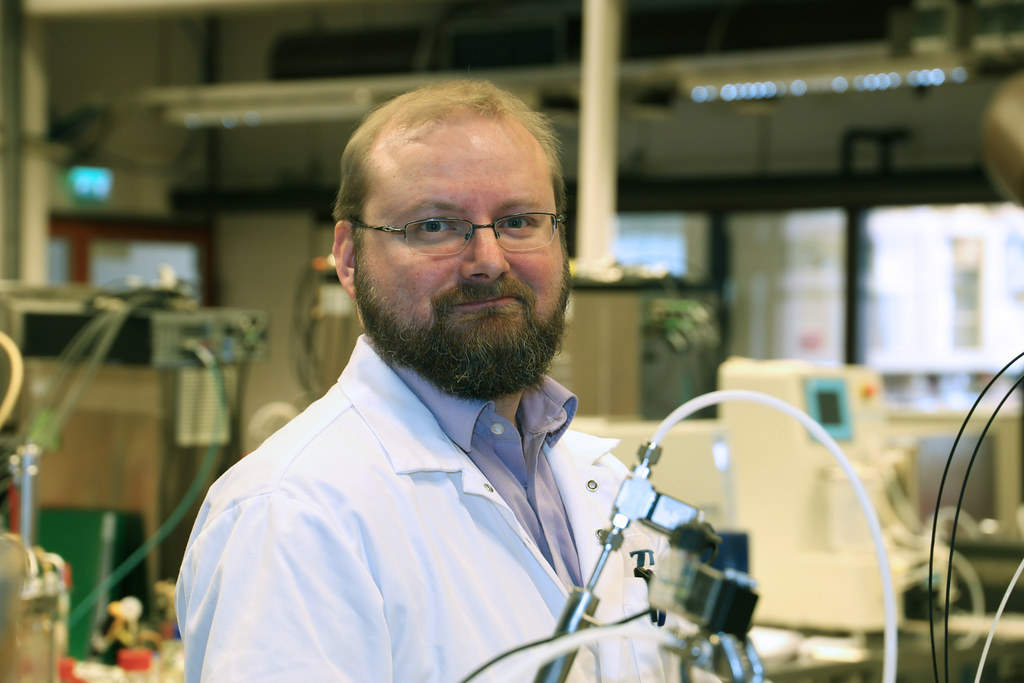http://e-info.org.tw/node/206393?utm_source=%E7%92%B0%E5%A2%83%E8%B3%87%E8%A8%8A%E9%9B%BB%E5%AD%90%E5%A0%B1&utm_campaign=b7eca9f2f0-EMAIL_CAMPAIGN_2017_07_27&utm_medium=email&utm_term=0_f99f939cdc-b7eca9f2f0-84956681
所有原料都來自空氣 芬蘭科學家「憑空」合成單細胞蛋白
摘譯自2017年7月24日ENS芬蘭,拉彭蘭塔報導;姜唯編譯;蔡麗伶審校
科學家想盡各種辦法來解決饑荒,聯合國還曾建議食用昆蟲,為的就是補充構成人體重要組成的蛋白質。不過,芬蘭的科學家最近研發出一種新方法,破解從環境中生產糧食的限制,「憑空」合成單細胞蛋白(SCP),可望進一步解決饑荒問題。
根據了解,只要在有太陽能等再生能源的地方,就能生產這種蛋白。其中一種可能的應用是家用反應爐。消費者甚至能用這樣的家電,在家裡自行生產蛋白質。

芬蘭拉彭蘭塔理工大學(Lappeenranta University of Technology,LUT)和國家科技研究中心(VTT Technical Research Centre of Finland)的科學家用電和二氧化碳合成一種單細胞蛋白,可用於發展成人類的糧食和動物飼料。
一旦這種蛋白取代動物飼料,土地便可移作其他用途,例如恢復成森林。且這個技術可在任何需要食物的地方生產糧食。
「不像傳統農業,這個開發中的技術不要求溫度、濕度或土壤型態等條件。因此可直接在農場中的運輸容器內用完全自動化過程生產飼料,也不需要控制病蟲害,只有在其中一個封閉製程中會用到類似肥料的營養物質,可以避免任何環境衝擊,包括廢水逕流或是溫室氣體。」LUT的教授阿霍拉(Jero Ahola)說。
研究人員估計,這個技術的能源效率是光合作用的十倍,也就是說能源效率遠高於生產大豆和其他作物的過程。不過,要讓這個技術更有競爭力,生產效率還得進一步提升。目前,生產1克的蛋白需時兩週,所需的實驗器材約為一個咖啡杯大小。
「實務上所有原料都來自空氣。未來這樣的技術可以用來解決沙漠等地區的饑荒問題。長遠來看,用電產生的蛋白適合當成烹飪材料或直接成為產品。只要調整生產過程用的有機體,就能產生不同的混合物。這些混合物非常營養,超過50%蛋白質和25%的碳水化合物,剩下的25%則是脂肪跟核酸。」VTT首席科學家尤哈.佩卡.皮特凱寧(Juha-Pekka Pitkänen)說。

下一個階段是試產。試產階段生產的數量較少,僅供飼料和食物的開發與測試以及流程和產品的商業化研究。
Protein Made With Electricity Could Ease World Hunger
Finnish scientists have produced a single-cell protein using electricity and carbon dioxide that can be developed for use as human food and animal feed.
The protein can be produced anywhere renewable energy, such as solar energy, is available. One possibility is a home reactor, a domestic appliance that consumers can use to produce the protein themselves.
The scientists say, their method releases food production from restrictions related to the environment.
The single-cell protein was made in a joint study by the Lappeenranta University of Technology (LUT) and VTT Technical Research Centre of Finland, the country’s national research lab.
“In practice, all the raw materials are available from the air. In the future, the technology can be transported to, for instance, deserts and other areas facing famine,” explains Juha-Pekka Pitkänen, principal scientist at VTT.
“In the long term, protein created with electricity is meant to be used in cooking and products as it is. The mixture is very nutritious, with more than 50 per cent protein and 25 percent carbohydrates. The rest is fats and nucleic acids. The consistency of the final product can be modified by changing the organisms used in the production,” Pitkänen explains.
The protein can be used as a fodder replacement, releasing land areas for other purposes, such as forestry. It allows food to be produced wherever it is needed.
“Compared to traditional agriculture, the production method currently under development does not require a location with the conditions for agriculture, such as the right temperature, humidity or a certain soil type,” says Professor Jero Ahola of Lappeenranta University.
“This allows us to use a completely automatised process to produce the animal feed required in a shipping container facility built on the farm,” he said.
“The method requires no pest-control substances. Only the required amount of fertilizer-like nutrients is used in the closed process. This allows us to avoid any environmental impacts, such as runoffs into water systems or the formation of powerful greenhouse gases.”
The researchers estimate that the process of creating food from electricity can be nearly 10 times as energy-efficient as common photosynthesis, which is used for cultivation of soy and other products.
For the product to be competitive, the production process must become even more efficient. Currently, the production of one gram of protein takes around two weeks, using laboratory equipment that is about the size of a coffee cup.
The next step is to begin pilot production. At the pilot stage, the material would be produced in quantities that can be used for development and testing of fodder and food products and commercialization of the process and the product.
※ 全文及圖片詳見:ENS
作者
蔡麗伶(LiLing Barricman)
In my healing journey and learning to attain the breath awareness, I become aware of the reality that all the creatures of the world are breathing the same breath. Take action, here and now. From my physical being to the every corner of this out of balance's planet.





沒有留言:
張貼留言